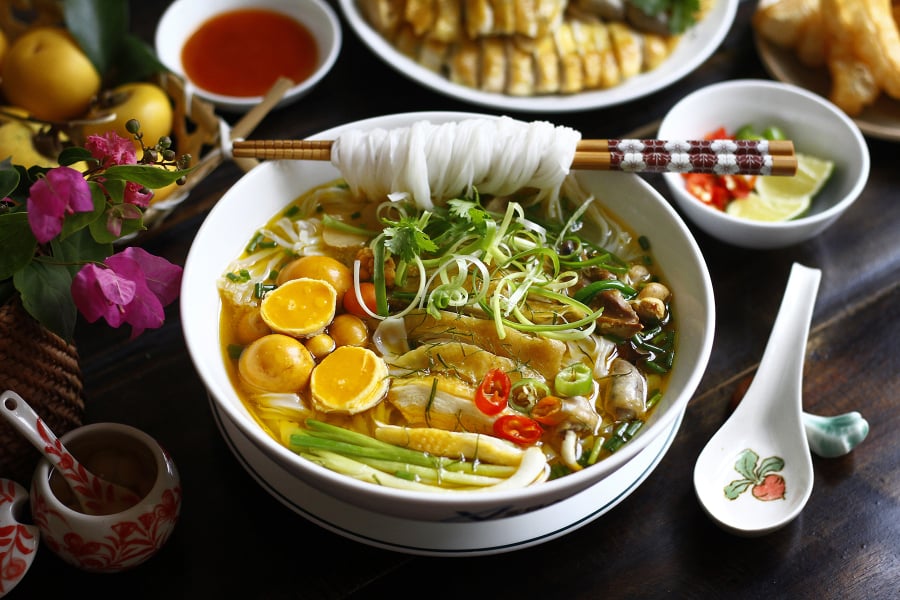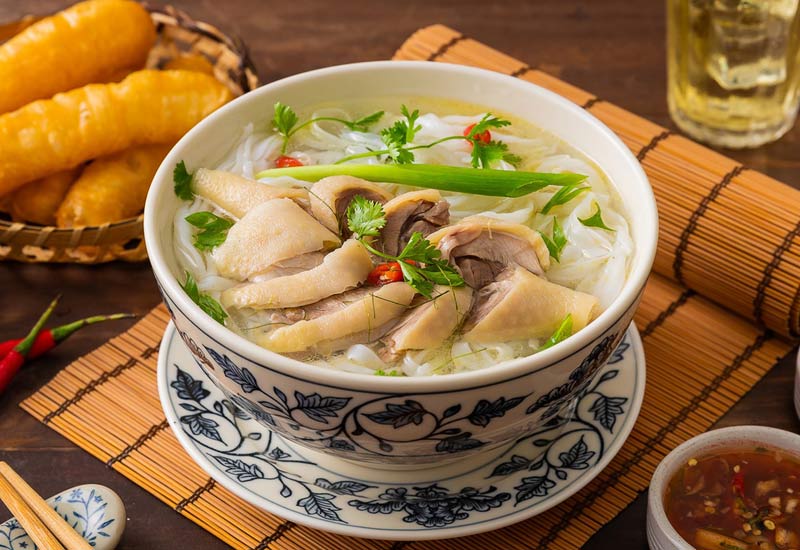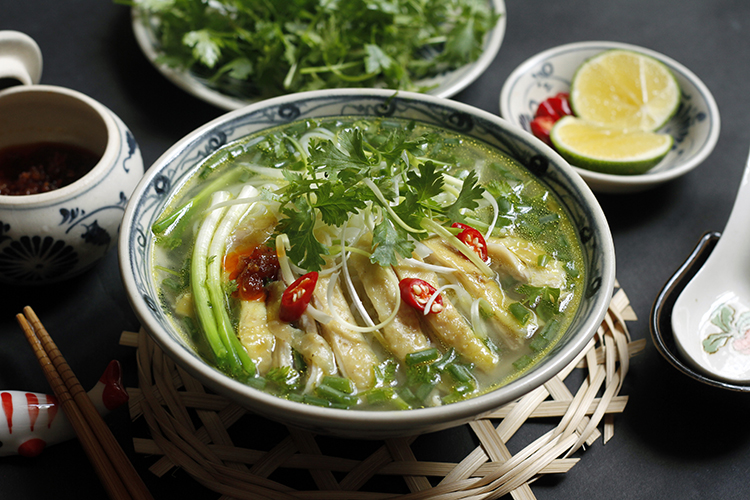Nutritional Value of Chicken Pho
According to Nutritionix, a standard bowl of chicken pho (360-400g) contains approximately 220-350 calories, 17g of protein, 4g of fat, 31g of carbohydrates, and sodium levels ranging from 800-1,200mg, depending on the amount of salt added and the sodium content of the broth.
These nutritional values can vary depending on serving size, cooking methods, and ingredients used. For instance, if you opt for a larger portion or add extra vegetables and spices, the nutritional profile will be adjusted accordingly.

Nutritional values may vary depending on portion size, cooking methods, and ingredients used
Benefits of Enjoying Chicken Pho Daily
Chicken pho, a signature dish of Vietnam, stands out with its alluring broth, soft rice noodles, tender chicken, and abundant herbs and spices. This harmonious combination not only delivers exceptional flavor but also offers numerous health benefits:
– Protein-rich food: A bowl of chicken pho provides a good amount of quality protein, supporting muscle building and repair effectively.
– Low-calorie option: When consumed in moderate portions, chicken pho is a low-calorie meal choice, ideal for those mindful of their daily calorie intake.
– Immune-boosting: The broth, made from simmered bones, is rich in nutrients beneficial for the immune system. Additionally, herbs like coriander possess antioxidant and anti-inflammatory properties, giving your body extra strength to fight off illnesses.

Bone broth is rich in nutrients beneficial for the immune system
Potential Risks of Daily Chicken Pho Consumption
Despite the nutritional benefits of chicken pho, eating this dish every day without careful consideration of nutritional factors can lead to some health concerns:
– High sodium levels: Many pho restaurants use broth with a high salt content, which can contribute to high blood pressure and an increased risk of heart disease if consumed excessively. A bowl of pho may contain over 1,000mg of sodium, nearly half of the daily recommended sodium intake.
– Low fiber content: Rice noodles are typically made from white rice, resulting in a low fiber content. Fiber is essential for digestive health. A prolonged fiber deficiency in your diet can lead to constipation and other digestive issues.

White rice noodles have a low fiber content
Tips for Healthier Chicken Pho Consumption
If you adore chicken pho and wish to enjoy it daily while maintaining a nutritious diet, consider the following suggestions:
– Reduce salt intake: Prepare your broth at home with moderate salt, or opt for restaurants that offer low-sodium broth options. Also, limit the use of fish sauce or other sodium-rich condiments.
– Increase fiber intake: Instead of white rice noodles, try brown rice noodles to boost your fiber intake. Adding more green vegetables will also provide additional vitamins and fiber.
– Choose leaner chicken: Opt for skinless chicken to minimize the amount of saturated fat in your meal.
– Practice portion control: While chicken pho is relatively healthy, overconsumption can lead to excess calorie or sodium intake. Pay attention to your body’s hunger cues to maintain a balanced diet.
You can certainly enjoy chicken pho daily without worries by adjusting the cooking methods and portion sizes. With mindful adjustments to salt intake, fiber content, and protein choices, this beloved dish can remain a part of a healthy lifestyle.
3 Ways Tofu May Not Be As Healthy As You Think
Tofu is not just a delicious food, but also a “superfood” for heart health, bones, and the endocrine system. This soy-based food is a powerhouse of nutrition and offers numerous health benefits. However, despite its impressive nutritional profile, there are a few things to keep in mind when incorporating tofu into your diet.




































